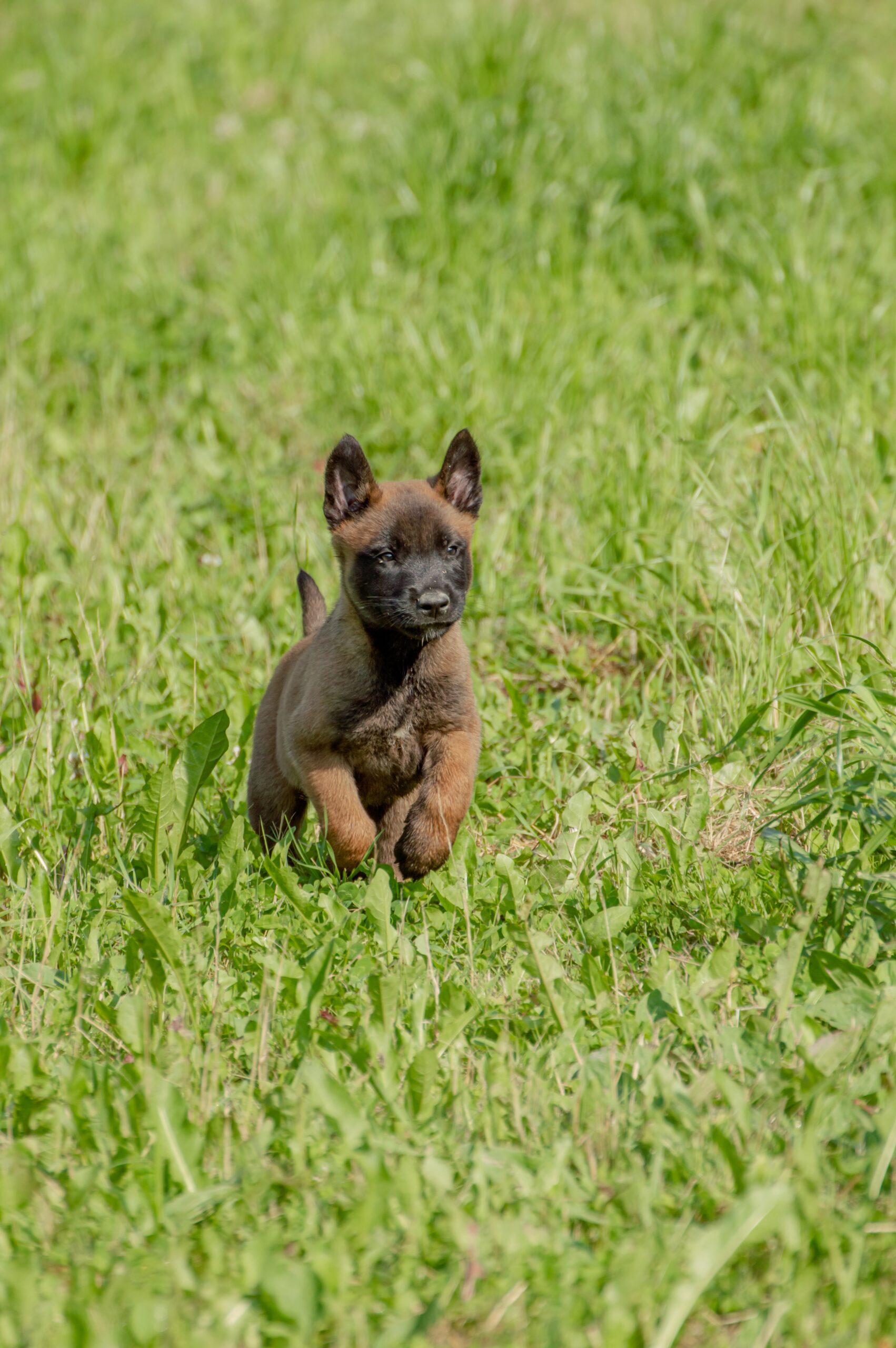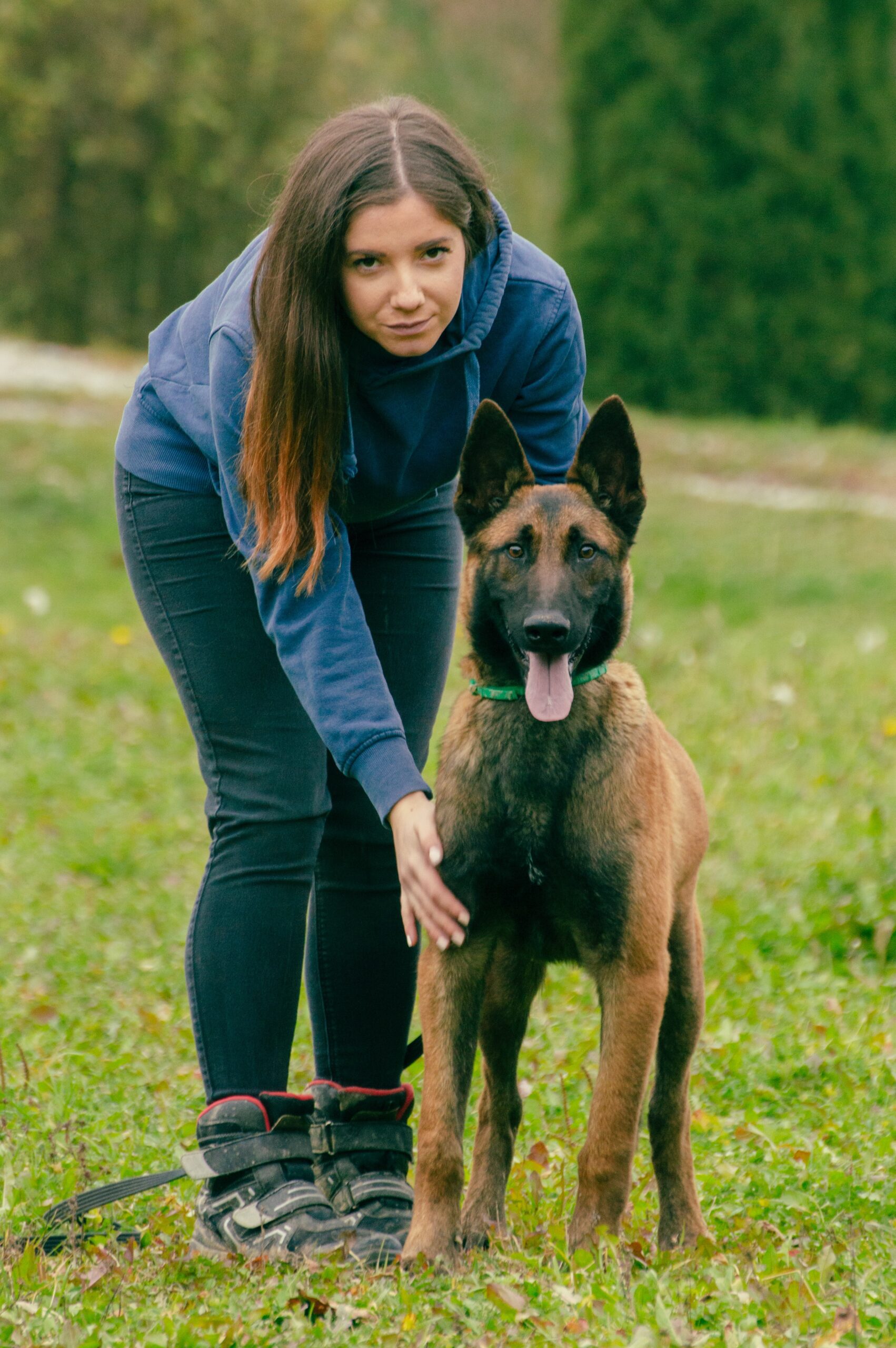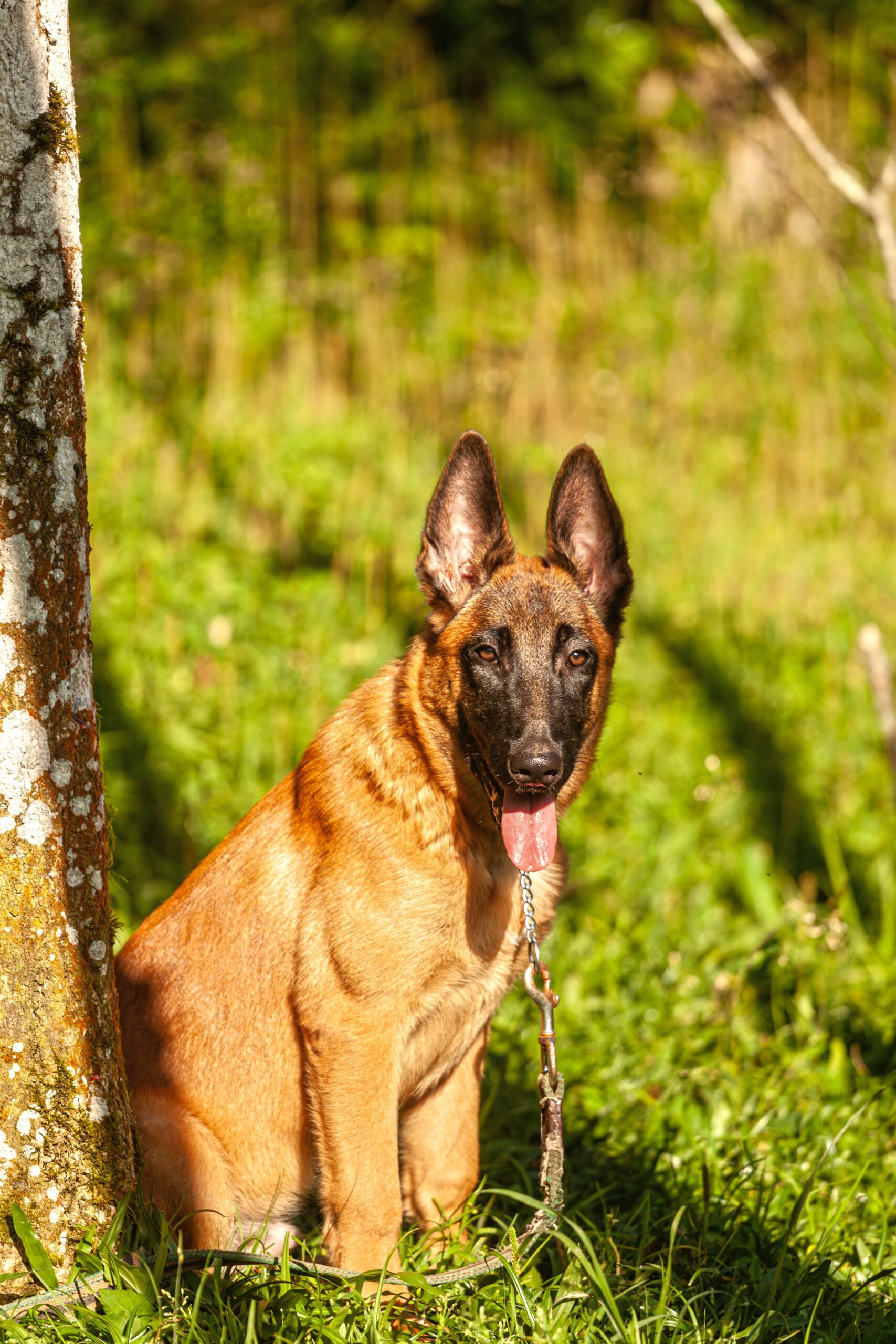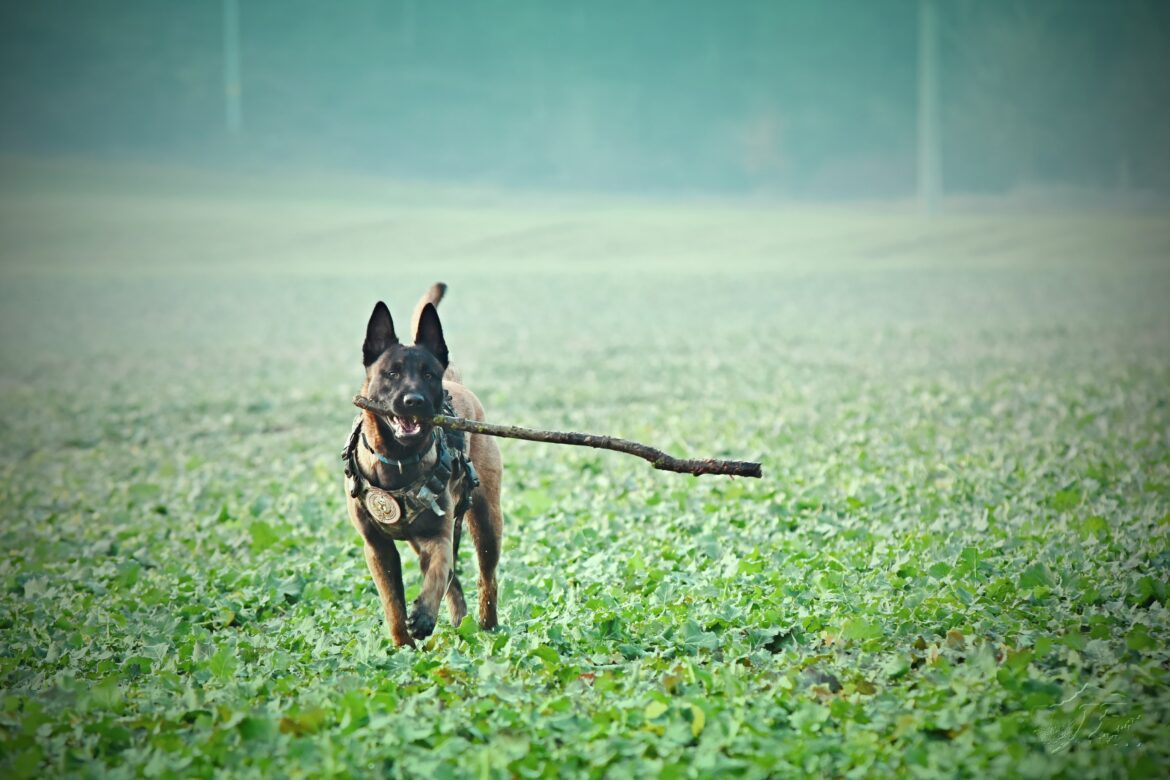Introduction
Welcoming a Belgian Malinois into your life means embarking on an incredible journey with a remarkable breed. The Belgian Malinois is a versatile and intelligent dog known for its loyalty, athleticism, and unwavering work ethic.
Originally bred for herding and guarding, this breed has found its place in various roles, including search and rescue, police work, and competitive sports.
As a responsible owner, it’s crucial to understand the significance of proper nurturing and care throughout your Belgian Malinois’ life stages. From puppyhood to adulthood, each phase requires specific attention and tailored approaches to foster their physical, mental, and emotional well-being.
If you want to ensure that your Belgian Malinois thrives at every stage of their life, join us as we delve into a comprehensive guide on nurturing your beloved companion. From socialization and training to health and nutrition, we’ll provide you with practical tips and insights to help you navigate each stage with confidence.
I. Puppyhood (0-6 months)

A. Socialization: The key to a well-rounded Belgian Malinois
1. Exposing your puppy to various environments, people, and animals:
– Take your Belgian Malinois puppy on regular outings to different environments such as parks, sidewalks, or pet-friendly stores. Expose them to various sights, sounds, and smells to help them become accustomed to different stimuli.
– Introduce your puppy to different people, including friends, family members, and strangers (in controlled and safe situations). Encourage gentle interactions and positive experiences, allowing them to build confidence and trust with new individuals.
– Arrange controlled and supervised meetings with other well-behaved dogs or animals. This helps them learn appropriate social behaviors, such as how to interact with and communicate with other animals.
2. Positive reinforcement training and basic commands:
– Utilize reward-based training methods, such as treats, praise, or play, to reinforce desired behaviors. When your puppy follows a command or exhibits good behavior, immediately reward them with something they find rewarding.
– Begin with basic commands like “sit,” “stay,” and “come.” Use consistent verbal cues and hand signals to teach them these commands, and reward them when they successfully respond.
– Break training sessions into short, focused intervals to maintain their attention and motivation. Keep the training sessions fun and engaging to encourage active participation and learning.
B. Health and Nutrition:
During the first six months of your Belgian Malinois puppy’s life, their health and nutrition play a crucial role in their growth and well-being. While it’s always best to consult with a veterinarian for personalized guidance, here are some general principles to consider:
1. Vaccinations:
– Ensure your puppy receives the appropriate vaccinations as recommended by veterinary guidelines. Vaccinations protect them from common diseases and provide immunity.
– Follow a vaccination schedule that includes core vaccines such as distemper, parvovirus, and adenovirus, as well as any additional vaccines suggested by your vet based on your puppy’s lifestyle and risk factors.
2. Age-appropriate diet:
– Feed your puppy a high-quality, commercial puppy food specifically formulated to meet their nutritional needs during this crucial growth period.
– Look for puppy foods that are labeled as “complete and balanced” and contain essential nutrients like protein, fats, carbohydrates, vitamins, and minerals.
– Follow the feeding guidelines provided on the food packaging, adjusting portion sizes based on your puppy’s appetite, weight, and growth rate.
3. Feeding schedule:
– Establish a consistent feeding schedule for your puppy, offering meals at regular intervals throughout the day.
– Puppies generally require more frequent meals, usually three to four times a day, to support their rapid growth and metabolism.
– Divide the daily recommended portion into equal meals and feed your puppy at the same times each day. This helps establish a routine and aids in digestion.
4. Hydration:
– Ensure your puppy has access to fresh, clean water at all times. Hydration is essential for their overall health and helps maintain proper bodily functions.
– Monitor their water intake, especially during hot weather or periods of increased physical activity, to prevent dehydration.
5. Monitoring growth and weight:
– Regularly monitor your puppy’s growth and weight to ensure they are developing at a healthy rate. While every puppy is different, steady growth is generally desired.
– Avoid overfeeding, as excess weight gain can lead to health problems. Conversely, underfeeding can hinder proper growth and development.
Remember, these are general guidelines, and individual puppies may have specific nutritional needs or health considerations. Consulting with a veterinarian ensures personalized advice and guidance tailored to your Belgian Malinois puppy’s unique requirements.
C. Exercise and Mental Stimulation:
1. Age-appropriate physical activities and playtime:
– For a young Belgian Malinois puppy, age-appropriate physical activities involve gentle exercises that promote proper bone and muscle development without causing strain or injury. This can include short walks on soft surfaces, controlled play sessions with other well-socialized dogs, or supervised free play in a secure and safe environment. Avoid excessive jumping or high-impact activities during this stage.
– As your puppy grows older, you can gradually increase the intensity and duration of exercise. Introduce activities like short runs, playing fetch, or structured obedience training sessions to further build their physical capabilities.
2. Introduction to puzzle toys and brain games:
– Puzzle toys are an excellent way to engage your Belgian Malinois puppy’s intellect and provide mental stimulation. Start with simpler puzzle toys that involve treats or food hidden within compartments, encouraging them to problem-solve and use their natural instincts to retrieve the rewards. Examples of such toys include treat-dispensing balls or puzzle feeders.
– As your puppy becomes more adept at solving puzzles, you can introduce more challenging brain games. Consider interactive toys that require them to figure out how to manipulate objects or solve more complex tasks to access their rewards. For instance, toys that require them to push, twist, or slide components to reveal hidden treats or toys can provide mental enrichment.
Always supervise playtime and ensure the toys and activities you choose are safe and suitable for your Belgian Malinois’s age and size.
II. Adolescence (6-18 months)

A. Continued Socialization and Training:
1- Building on basic commands and obedience training:
- During adolescence, your Belgian Malinois puppy is ready to expand their training beyond the basics. Build on the foundation of basic commands they learned as a puppy, such as sit, stay, and come.
- Introduce more advanced commands and techniques, such as “leave it,” “heel,” or “down.” Use positive reinforcement methods to reward their progress and encourage consistent obedience.
- Consider enrolling in obedience classes or working with a professional dog trainer to further refine their training skills and ensure they respond reliably to commands.
2- Controlled exposure to new situations and experiences:
- Adolescence is an ideal time to continue exposing your Belgian Malinois to new environments, people, and animals. However, it’s important to introduce these experiences gradually and in a controlled manner.
- Expose your dog to different environments, such as busy streets, parks, or public spaces. Expose them to various sounds, sights, and situations to help them become confident and adaptable in different settings.
- Arrange controlled meetings with new people and animals to help them develop good social skills. Supervise these interactions, provide guidance, and reward positive behavior to ensure a positive experience for your dog.
B. Health and Nutrition:
- Transitioning to adult dog food and adjusting portion sizes:
– As your Belgian Malinois enters adolescence, consult with your veterinarian to determine the appropriate time to transition from puppy food to adult dog food. The timing may vary based on their individual growth and nutritional needs.
– Adult dog food is formulated differently from puppy food to meet the specific nutritional requirements of a growing but maturing dog. It provides the right balance of proteins, fats, carbohydrates, vitamins, and minerals for their development.
– Gradually introduce the new adult dog food by mixing it with the remaining puppy food over a period of about a week, gradually increasing the proportion of adult food. This helps prevent digestive upset during the transition.
2. Monitoring growth and maintaining a healthy weight:
– During adolescence, your Belgian Malinois may experience a growth spurt, and it’s important to monitor their weight and body condition to ensure they are growing at a healthy rate.
– Regularly assess their body condition by visually observing and feeling their ribs. They should have a slight layer of fat covering the ribs, but they should still be easily felt. If they are becoming too thin or overweight, consult with your veterinarian to make necessary adjustments to their diet.
– Work with your veterinarian to determine the appropriate portion sizes for their age, weight, and activity level. Adjust their food intake accordingly to maintain a healthy weight and prevent obesity or malnutrition.
– Along with proper nutrition, regular exercise is important for maintaining a healthy weight. Ensure your Belgian Malinois gets regular opportunities for physical activity and mental stimulation.
Remember to consult with your veterinarian for personalized guidance regarding your Belgian Malinois’s health and nutritional needs during adolescence. They can provide specific recommendations tailored to your dog’s individual requirements and ensure they are on track for a healthy adulthood.
C. Energy Management:
1. Providing outlets for increased energy and drive:
– Belgian Malinois dogs are known for their high energy levels and drive. During adolescence, it’s essential to provide them with constructive outlets for their energy.
– Engage in interactive play sessions that involve physical exercise and mental stimulation. Play fetch, engage in tug-of-war games, or use flirt poles to provide a healthy outlet for their energy.
– Consider activities like agility training or organized sports that allow your Belgian Malinois to use their physical abilities and fulfill their natural instincts. These activities not only burn off energy but also provide mental stimulation and help build a stronger bond between you and your dog.
2. Engaging in advanced training activities and sports:
– Adolescence is a great time to explore advanced training activities and sports that challenge your Belgian Malinois’s abilities and fulfill their working instincts.
– Consider enrolling in obedience competitions, where your dog can showcase their training skills and demonstrate their responsiveness to commands in a competitive setting.
– Explore scent work or nose work, which taps into their excellent scenting abilities. These activities involve teaching your dog to search for and identify specific scents, providing mental stimulation and engaging their natural instincts.
– Protection training or bite work, when conducted under the guidance of a professional trainer, can help channel your dog’s protective instincts in a controlled and constructive manner.
III. Adulthood (18 months and beyond)

Photo by Fernando Lacerda Branco
A. Reinforcing Training and Discipline:
1. Ongoing training sessions for mental stimulation:
– Training should not stop once your Belgian Malinois reaches adulthood. They are intelligent and highly trainable dogs that thrive on mental stimulation.
– Continue to engage their minds with regular training sessions. Reinforce the commands they have learned and introduce new ones to keep their training fresh and challenging.
– Use positive reinforcement techniques, such as rewards and praise, to motivate and reinforce desired behaviors. Make the training sessions fun and interactive for both you and your dog.
2. Setting boundaries and reinforcing good behavior:
– Consistency is key in maintaining good behavior in your adult Belgian Malinois. Establish clear rules, boundaries, and expectations right from the beginning and consistently reinforce them.
– Reinforce positive behaviors such as sitting politely, waiting at doorways, or walking calmly on a leash. Use positive reinforcement techniques to reward and encourage these behaviors.
– Be firm and consistent in correcting any unwanted behaviors. Redirect their attention to appropriate activities and reward them for making the right choices.
– Avoid harsh punishment or physical corrections, as they can be counterproductive and harm your relationship with your dog.
By continuing to train and reinforce good behavior, you’ll help your Belgian Malinois stay mentally stimulated and well-behaved throughout their adult life. Training sessions provide an opportunity for bonding, communication, and mental exercise, all of which contribute to a happy and well-adjusted dog. Remember to adapt your training methods and challenges to suit their maturity level and individual needs.
B. Balanced Diet and Exercise:
1. Meeting the nutritional needs of an adult Belgian Malinois:
– Choose a high-quality, breed-specific dog food that is appropriate for the nutritional needs of adult Belgian Malinois.
– Look for a dog food that provides a balance of protein, healthy fats, carbohydrates, vitamins, and minerals to support their energy levels, muscle maintenance, and overall health.
– Consider factors such as your dog’s activity level, weight, and any specific dietary requirements or sensitivities they may have. Consult with your veterinarian to select the most suitable diet for your Belgian Malinois.
2. Maintaining a regular exercise routine for physical fitness:
– Regular exercise is vital for keeping your adult Belgian Malinois physically fit, mentally stimulated, and well-behaved.
– Provide daily opportunities for exercise, including activities such as brisk walks, jogging, hiking, or running. These exercises help burn off excess energy and keep their muscles toned.
– Engage in interactive play sessions with toys or games like fetch, tug-of-war, or hide-and-seek. These activities not only provide physical exercise but also stimulate their minds and strengthen the bond between you and your dog.
– Consider incorporating activities that tap into their natural instincts, such as agility training, obedience training, or participating in organized sports like dock diving or flyball. These activities offer mental and physical challenges that fulfill their working heritage.
Monitoring your dog’s weight and body condition is important. Adjust their diet and exercise routine as needed to maintain a healthy weight and prevent obesity or excessive weight gain.
By providing a balanced diet and regular exercise, you’ll help your adult Belgian Malinois maintain their overall health, energy levels, and well-being. Additionally, the physical and mental stimulation from exercise will contribute to a happy and contented dog.
C. Mental Engagement:
- Introducing advanced puzzles and games to keep their mind sharp:
– Belgian Malinois dogs are highly intelligent and thrive on mental stimulation. Introduce advanced puzzle toys that require problem-solving skills to keep their minds sharp.
– Engage them in scent detection games where they can use their excellent sense of smell to search for hidden treats or objects.
– Incorporate advanced obedience training exercises that challenge their understanding of commands and problem-solving abilities. Teach them new tricks or complex commands to keep their training sessions engaging and mentally stimulating.
2. Exploring new activities or sports to challenge them:
– Belgian Malinois dogs excel in various dog sports and activities. Consider participating in activities like agility, flyball, or tracking.
– Agility involves navigating an obstacle course, which challenges their physical abilities and mental agility. It requires them to follow your commands, navigate obstacles, and complete the course in a specific order.
– Flyball is a relay race where dogs have to jump over hurdles, retrieve a ball, and race back to the starting point. It combines speed, agility, and teamwork.
– Tracking involves teaching your Belgian Malinois to follow scent trails and locate specific objects or persons. It taps into their natural instincts and provides mental stimulation.
IV. Special Considerations
A. Managing High Drive and Energy Levels:
-
Channeling their energy into constructive activities:
Provide ample opportunities for physical exercise, mental challenges, and structured tasks to redirect their energy in a positive way.
-
Seeking professional guidance if behavioral issues arise:
If you encounter difficulties in managing their high drive or any behavioral problems, consult a professional dog trainer or behaviorist experienced with working breeds like the Belgian Malinois.
B. Aging and Senior Care:
-
Adapting exercise routines to suit their changing needs:
As your Belgian Malinois ages, adjust their exercise routine to accommodate any physical limitations or age-related conditions, ensuring they still receive appropriate activity and mental stimulation.
-
Addressing common health issues and providing comfort:
Regular vet check-ups, a balanced diet, and a comfortable environment can help manage age-related health issues and ensure your senior Belgian Malinois enjoys their golden years with quality of life.
VI. Conclusion
Nurturing a Belgian Malinois from puppyhood to adulthood is a fulfilling and rewarding experience. By providing the right balance of socialization, training, health care, nutrition, exercise, and mental stimulation, you can ensure that your Belgian Malinois thrives at every life stage.
Remember to always adapt your approach to meet the evolving needs of your furry companion. With love, patience, and a commitment to their well-being, your Belgian Malinois will flourish into a loyal and family dog breed, ready to conquer any challenge that comes their way. Embrace the journey and enjoy the bond you build with your Belgian Malinois throughout their lifetime.
